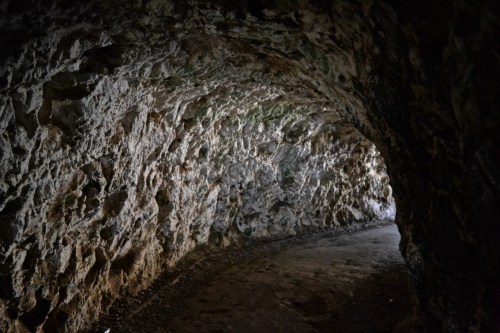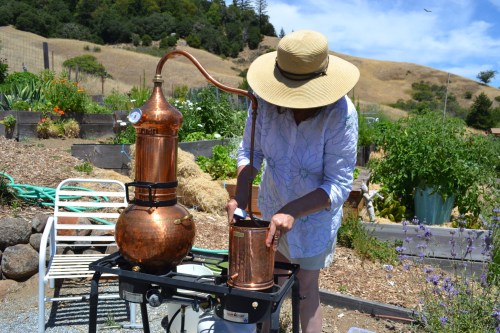
In celebration of summer’s wonderful #EverydayMoments and the National Park Service Centennial Year, which begins August 25th, we decided to spend some time this summer in the beautiful Golden National Recreation Area, one of the largest urban parks in the world at more than 80,000 acres, and home to some of the National Park Service’s most beloved spots, such as Muir Woods National Monument, Point Reyes National Seashore (above), and the San Francisco Presidio.
After spending a full day at San Francisco Maritime National Historic Park and Fisherman’s Wharf (see Part 1), we visited the Point Bonita Lighthouse.
Like Maritime Park, the Marin Headlands, home of the lighthouse, is another large parcel within GGNRA. We began our journey at the Visitor Center, where interactive exhibits showed aspects of the Headlands’ natural and human history. In the 1970s, the Headlands were saved from a massive housing development to become public land for all to enjoy. We listened to recorded stories in a Coast Miwok dwelling, explored the bones of animals, sniffed the aromas of various native plants and read early lighthouse keepers’ diaries.


The rangers helped us identify some great hikes. We chose a short trail through a tunnel and out to the lighthouse (check the web site for limited lighthouse hours.) Our walk offered beautiful vistas of the Pacific Ocean and the San Francisco Bay, where we saw seagulls and other birds and heard, but didn’t see, harbor seals and other sea creatures.





We learned a lot about lighthouse history from our knowledgeable ranger, Jim. Built in 1855, Point Bonita Lighthouse was the third lighthouse built on the west coast and the last to be manned, rather than to run on electricity. Each lighthouse and foghorn up and down the coast operates on a different pattern to help sailors navigate San Francisco’s treacherous waters. We learned about various shipwrecks (one of which is the namesake for GGNRA’s Tennessee Valley) and lighthouse operations and equipment. We listened to more great information through a cell phone system that GGNRA uses in many of its parks. Afterward we visited the pre-WWI Battery Mendell, one of the area’s military forts and saw the foundation for the old lighthouse keeper’s house around the bend of the bay (last photo, below).






Family Activities
GGNRA offers lots of great family activities throughout the year at many of its sites. Our interest piqued about the park, we decided to join Golden Gate National Parks Conservancy for a morning of crabbing at Fort Baker Pier. We were greeted by our ranger, Al, who quickly showed us how easy it is to toss a crab basket, frisbee-style and containing a pouch with raw chicken for bait, into the bay.

We learned about the various species of crabs in San Francisco Bay. These include Dungeness crabs–which are popular for eating, but which we weren’t allowed to keep if caught; yellow crabs; rock crabs; red crabs and slender crabs. We learned about the markings on a crab’s belly, which is one good way to distinguish male crabs from female crabs. Below is a male, noted for the triangle shape on the belly.


Unlike fishing, there’s no tug on the line to alert you that you’ve caught a crab. Once you’ve lowered the net into the water, you just have to wait 10 minutes or more before checking to see if anything swam into your basket to take the bait.
After a time, I pulled up my basket. I had caught a crab! This was very exciting. I pulled it up to the pier. On closer inspection, the basket contained a large rock crab and a smaller red crab.

My crab was measured and deemed too large to keep. (There are a lot of other rules about types and sizes of crabs, and even genders, that can be kept. If you go crabbing independently, you’ll want to know the rules and obey posted signs.)

We explored our crabs a bit before tossing them back into the sea.



One of our new friends caught a fish.

Crabbing is a slow activity that provides a lot of delight (and perhaps dinner), as well as a chance to explore and learn a little more about the bay and its inhabitants. A couple of hours is plenty of time for crabbing. GGNRA offers crabbing at multiple locations. As a bonus, Fort Point is adjacent to a small beach that’s perfect for toddlers, and the Bay Area Discovery Museum, where you can continue to learn about crabs and fish (and even establish your own pretend fishery in the San Francisco Bay Room), as well as explore the many natural elements and exhibits that the award-winning hands-on museum has to offer.


Here are some other piers throughout California where you can go crabbing.

Road Trip Tips
If you’re traveling to visit a national park, there are ways to make your travel smoother and more delightful and memorable. Sometimes half the fun of family travel is “getting there”. Road trips have provided some of our family’s most treasured #EverydayMoments.
- Involve kids in the planning or have them follow the trip’s progress on a map. If you’re an AAA member, maps are free. Some kids may want to keep a trip journal and add photos when they get home.
- Have food and drinks on hand, if possible, and take frequent breaks to eat, use restrooms, or just stretch your bodies.
- Remind children who are on screens to take breaks, to play a game or look around.
- Pack along a few portable games for outdoor breaks and quiet times, such as cards, Mad Libs, a jump rope or jacks.
- Play some of these tried-and-true road trip games that don’t require any equipment. They help make family memories when you’re driving, flying, or waiting in line.
Tried-and-True Road Trip Games
What I See From A to Z
Players try to find letters in license plates, billboards, road signs, or objects and must call out “I see an A,” or “I see something that starts with B,” when they spot a letter.
The first person to complete the alphabet wins. A variation for younger children is to pick one letter and have everyone look for that.
Semi Search
If you’re traveling on the interstate, you will probably have a lot of trucks for company, and this fun game makes use of that.
Each player chooses a different color. That color will be the color of truck trailer that the player is then searching for. Players announce when they see a semi on the road in their color, and they get one point for each.
A scorekeeper can be appointed to keep count, or everyone can keep their own score. The game is played until one person reaches 25 points, or another agreed-upon number.
Travel Scavenger Hunt (also known as Travel Olympics)
You’ll need: Pencil and paper for each player
Players all contribute to one list of 10-20 things they can see from or do in the car. For example, a list might include passing a cow pasture, seeing a gas station that has the color red in its logo, holding one’s breath through a tunnel, spotting two yellow license plates, or passing an RV.
The first person to accomplish everything on the list wins.
License Plate Scramble
The first player calls out all the letters, in order, that appear on a passing license plate.
All players try to create a word using those letters, in the same order. The first person to do so gets a point. For example, a player might call out ARN, and he, she, or any other player might come up with “arachnid” or “yarn”.
Decide if you want to play to a certain number of points, like 25. The first player to reach that total wins.
O.S.L.P.
Players search passing cars for “out of state” license plates (out of the state they are currently traveling in.)
When such a plate is spotted, the player yells, “O.S.L.P.!” If they are the first to see a particular plate, they score a point.
Decide if you want to play to a certain number of points, like 10. The first player to reach that total wins.
What Animal Am I?
One player thinks of an animal. Other players ask “yes” or “no” questions to determine what animal the first player is. Players might ask, “Do you live in the ocean?” or “Do you have four legs?”
There is no limit to the number of questions. Players can simply give up when stumped and choose who gets to be the animal next. Otherwise, the player who guessed the animal gets to be the next up.
This is part of a larger American Express initiative that will help encourage volunteering in America’s National Parks.
On July 30th, Amex EveryDay kicked off a contest that encourages people to share a photo and caption of their own #EveryDayMoments, taken at any park, for a chance to win one of three trips to some spectacular National Parks: National Mall and Memorial Parks (Washington, DC), Yosemite National Park (California) and Grand Canyon National Park (Arizona)
Click Here to Enter between July 30th and August 31st: http://bit.ly/1elJ6qC; terms apply.

Be sure to see Family Fun at Golden Gate National Recreation Area, Part 1.
I am an Amex EveryDay CardMember and Ambassador for this program. However, all opinions about the Card are my own.
Road trip activities are adapted from Fed Up with Frenzy: Slow Parenting in a Fast-Moving World, which contains more travel games in addition to 300+ fun family activities.
Photos by Susan Sachs Lipman and Wood for the Trees








































































































































